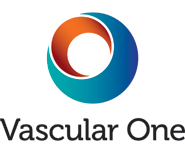Ultrasound refers to very high frequency sound waves which cannot be heard by the human ear. It has been used in clinical diagnostic medicine since the 1950’s, however advances in technology over this time frame have meant that today’s sophisticated ultrasound systems have significantly increased, and continue to increase, the quantity and quality of diagnostic information obtainable though this invaluable medium
Ultrasound is a very safe means of determining disease or other medical conditions in the human body; if used correctly, there are no significant harmful side-effects known. It is ‘non-invasive’, which means that there is nothing that will penetrate the skin, or involve the injecting or ingestion of dyes or radio-opaque material.
During an ultrasound scan, the high frequency sound waves are passed into the body via a transducer which contacts the skin surface with the aid of a transmission gel. The sound waves generate echoes as they bounce back off internal structures, and these echoes are also received back via the transducer. The ultrasound system will then process the echoes, converting them into an image which is displayed on a screen or monitor.
